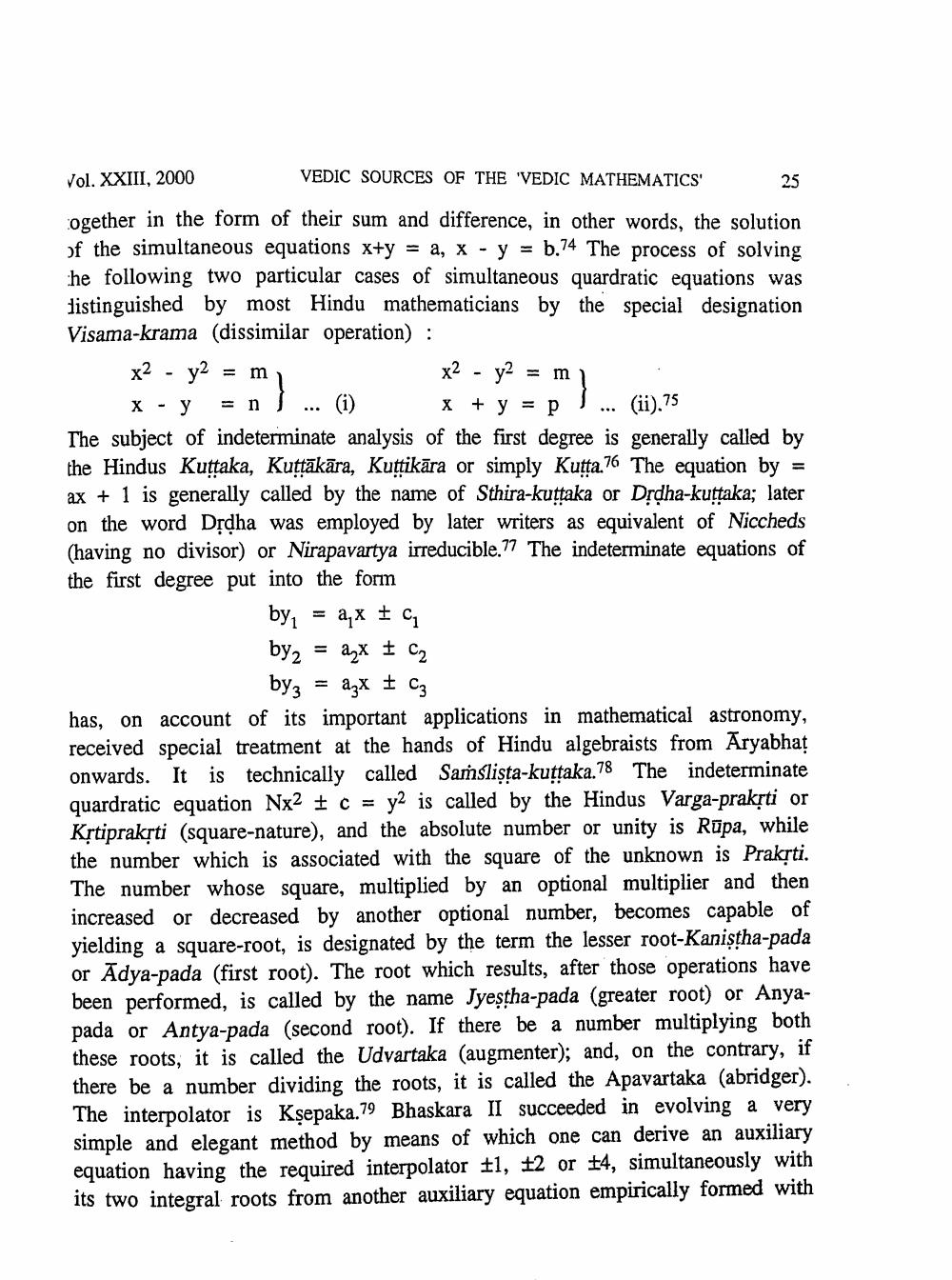________________
Vol. XXIII, 2000
VEDIC SOURCES OF THE "VEDIC MATHEMATICS
ogether in the form of their sum and difference, in other words, the solution of the simultaneous equations x+y = a, x - y = 6.74 The process of solving he following two particular cases of simultaneous quardratic equations was distinguished by most Hindu mathematicians by the special designation Visama-krama (dissimilar operation) : x2 - y2 = m
x2 - y2 = m x - y = n ) ... (i) x + y = p ) ... (ii).75 The subject of indeterminate analysis of the first degree is generally called by the Hindus Kuttaka, Kuttākāra, Kuttikāra or simply Kutta.76 The equation by = ax + 1 is generally called by the name of Sthira-kuttaka or Drdha-kuttaka; later on the word Drdha was employed by later writers as equivalent of Niccheds (having no divisor) or Nirapavartya irreducible.77 The indeterminate equations of the first degree put into the form
by, = 4x c by2 = azx cz
byz = azx £ cz has, on account of its important applications in mathematical astronomy, received special treatment at the hands of Hindu algebraists from Aryabhat onwards. It is technically called Saṁslista-kuttaka.78 The indeterminate quardratic equation Nx2 # c = y2 is called by the Hindus Varga-prakệti or Kștipraksti (square-nature), and the absolute number or unity is Rūpa, while the number which is associated with the square of the unknown is Praksti. The number whose square, multiplied by an optional multiplier and then increased or decreased by another optional number, becomes capable of yielding a square-root, is designated by the term the lesser root-Kaniştha-pada or Adya-pada (first root). The root which results, after those operations have been performed, is called by the name Jyeştha-pada (greater root) or Anyapada or Antya-pada (second root). If there be a number multiplying both these roots, it is called the Udvartaka (augmenter); and, on the contrary, if there be a number dividing the roots, it is called the Apavartaka (abridger). The interpolator is Ksepaka.79 Bhaskara II succeeded in evolving a very simple and elegant method by means of which one can derive an auxiliary equation having the required interpolator 1, 2 or 4, simultaneously with its two integral roots from another auxiliary equation empirically formed with




